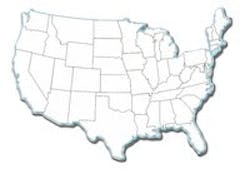EPA Releases 2013 Annual Enforcement Results
The U.S. Environmental Protection Agency (EPA) released its annual enforcement and compliance results demonstrating a focus on violations that have the most impact on public health.
Highlights from fiscal year 2013 include:
EPA’s cases resulted in criminal sentences requiring violators to pay more than $4.5 billion in combined fines, restitution and court-ordered environmental projects that benefit communities, and more than $1.1 billion in civil penalties.
Pursuing justice for Gulf Coast residents through the Deepwater Horizon cases, resulting in more than $3.7 billion going back to benefit the Gulf States and communities impacted by the spill.
Requiring Walmart to commit to cutting edge hazardous waste handling systems, as well as compliance and training programs that will protect employees and nearby residents. Walmart also paid more than $80 million in fines and penalties for mishandling pesticides and hazardous waste.
Ensuring that companies take responsibility and clean up the toxic pollution they create. In a landmark settlement, AVX Corp. committed to pay more than $366 million to clean up contamination in Massachusetts’s New Bedford Harbor, the largest single-site cash settlement in Superfund history.
Reducing dangerous air toxics released from industrial flares at refineries and chemical plants, requiring companies to implement technologies that control emissions. A recent Clean Air Act settlement with Shell Deer Park in Texas requires continuous monitoring of cancer-causing benzene and vehicle retrofits to reduce diesel emissions, put in place to benefit nearby overburdened communities. See another example of innovative pollution controls from Countrymark Refining.
Reducing emissions from coal fired power plants, requiring companies to cut pollution and conduct mitigation projects that promote energy efficiency and protect clean air for local communities. See examples from Wisconsin Power and Light, Dominion Energy and Louisiana Generating.
Working with cities to cut discharges of raw sewage and contaminated storm water to the nation’s waters through integrated planning, green infrastructure and other innovative approaches. This helps cities manage resources better, cut pollution and improve quality of life for local residents. Recent settlements with Seattle and King Co., Wash., and Wyandotte County, Kan., require cities to initially provide relief to overburdened communities most impacted by sewage discharges. Other examples of innovative settlements include San Antonio, and Jackson, Miss.
Source: EPA
